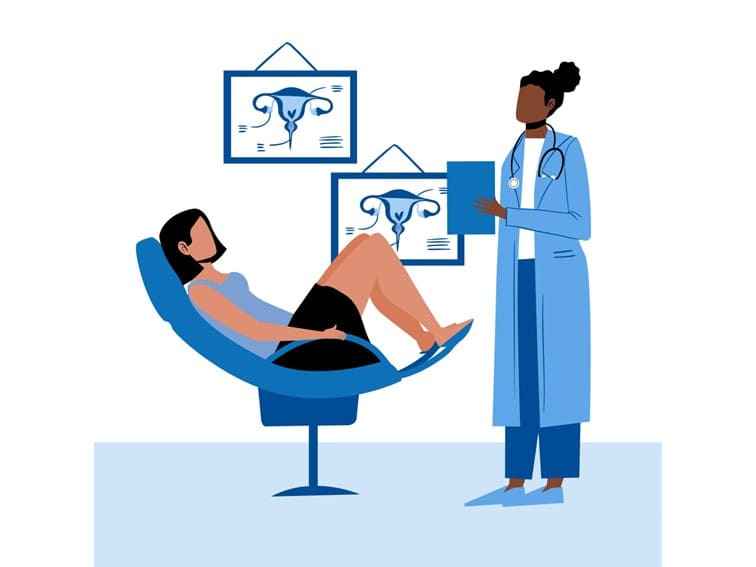Gynaecological screening tests are the ones that experts recommend when people don’t have any symptoms of the disease but are at risk of developing the disease. If women are at risk of developing certain gynaecological disorders, then gynaecologists recommend some specific screening tests. In general, doctors recommend tests if women have symptoms associated with their reproductive systems’ diseases to detect the cause of those conditions. Such tests are known as diagnostic procedures. Let us try to find out the reason for gynaecological screening tests and understand their significance.
A gynaecologist must do a thorough and meticulous clinical examination of her patient. The gynaecological examination includes a pelvic examination, abdominal examination and breast examination. After taking into account the detailed medical history of the patient, the doctor may recommend the following screening tests if needed:
Important Gynaecological Screening Tests for Women
The following three tests are very important screening tests for women who are at risk of cervical and breast cancers:
HPV (Human Papillomavirus) test
Gynaecologists remove a tissue sample (mostly a vaginal discharge) and test it for the presence of HPV. The sample is obtained with a swab. HPV can cause genital warts and may increase the risk of cervical cancer.
Both HPV and PAP tests are done together in women who are at risk of HPV infection.
Papanicolaou (PAP) test
PAP test is done to check abnormal growth in the cervical cells (cytology testing) of the cervix – the lower pole of the uterus. The test is quite helpful in the detection of cervical cancer. This test is helpful for the detection of precancerous cervical cells and cervical cancer. If precancerous cells called cervical intraepithelial neoplasia (CIN) are detected, they can be treated effectively – thus preventing the progression and spread of cervical cancer.
PAP – is a very simple test that helps in the early-stage detection of cervical cancer.
If HPV and PAP test results come normal in women younger than 30 years or above. These tests should not be repeated for at least 3 years.
Breast Cancer Test ( Mammography) – A mammography helps in detecting breast cancer in women.
Gynaecological screening tests for detecting STDs
Sexually active women are at risk of sexually transmitted infections such as gonorrhoea and chlamydial infections. STDs are common in men and women who have multiple sex partners. High-risk men and women should be screened for STDs. In a typical screening test, a sample is collected from inside the vagina with a swab and then it is sent to a laboratory for analysis. Learn more about VAGINITIS
Endometrial Biopsy
A Gynaecologist does a biopsy of the uterus lining (endometrial biopsy) to check the cause of abnormal vaginal bleeding and when endometrial cancer is suspected. In this procedure, a gynaecologist inserts a small tube through the cervix into the uterus to collect a tissue sample from the uterine wall. The procedure is completed within 15 to 20 minutes.
Colposcopy
A gynaecologist uses a special instrument to closely examine the vagina, vulva and cervix for potential signs of disease. This test is recommended when PAP test results are abnormal. If the gynaecologist finds any abnormal area during the examination, she will collect a tissue sample for biopsy under vision using a colposcope. The procedure may take 15 to 20 minutes time to complete.
Gynaecological cancer screening
A gynaecologist recommends colposcopy to help diagnose precancerous changes in the vagina, vulva and cervix.
Screening tests for cervical cancer have been proved to be very effective when compared to other cancers.
Similarly, Transvaginal ultrasound and CA125 are the two tests which are of significance in detecting ovarian cancers.
Bottom line
Experts recommend screening for all sexually active women. In general, screening should effectively start from the age of 21 years or three 3 years after vaginal sex with no upper age limit. Screening should continue yearly until a woman reaches 30 years. After every negative result, gynaecological screening tests should be done at an interval of every two to three years.
Screening is important because it helps gynaecologists explain to their patients about the importance of maintaining healthy habits, minimizing potential risks and identifying life-threatening diseases such as cervical cancer, breast cancers or endometrial cancers and also sexually transmitted diseases.
Remember! Screening ensures early detection and diagnosis of gynaecological cancers for effective treatment and excellent prognosis.




